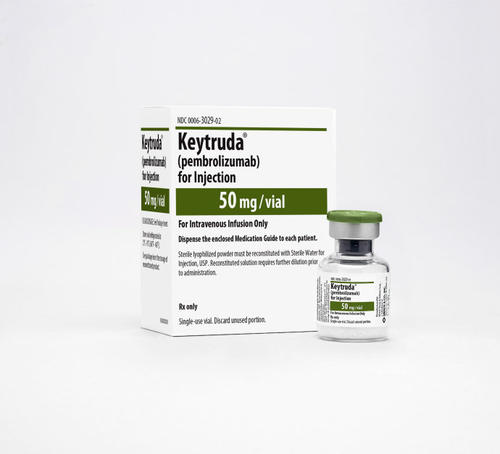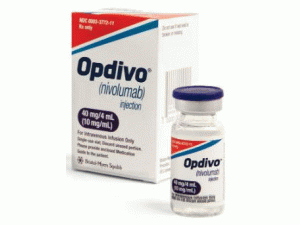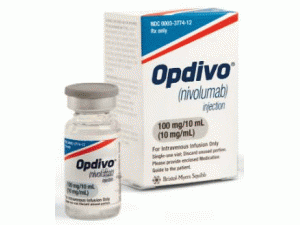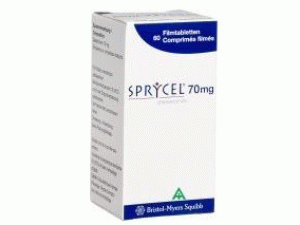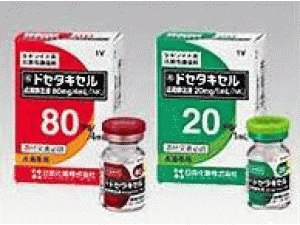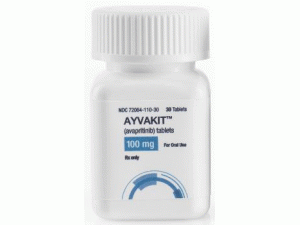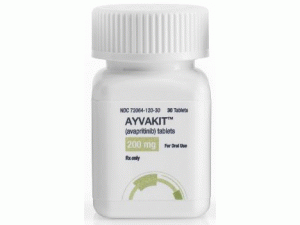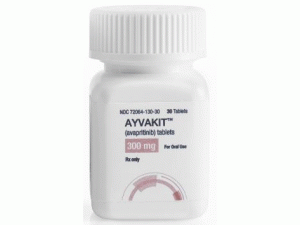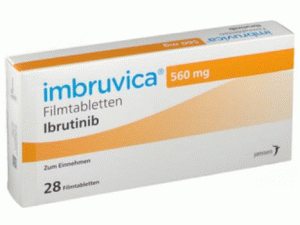塞利尼索selinexor(Xpovio tablets 12x20mg)
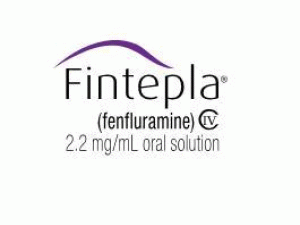 产地国家:美国
处方药:是
所属类别:20毫克/片 12片/盒
包装规格:20毫克/片 12片/盒
计价单位:盒
生产厂家英文名:Karyopharm Therapeutics
原产地英文商品名:Xpovio 20mg/tablets 12tablets/box
原产地英文药品名:selinexor
中文参考商品译名:Xpovio 20毫克/片 12片/盒
中文参考药品译名:selinexor
产地国家:美国
处方药:是
所属类别:20毫克/片 12片/盒
包装规格:20毫克/片 12片/盒
计价单位:盒
生产厂家英文名:Karyopharm Therapeutics
原产地英文商品名:Xpovio 20mg/tablets 12tablets/box
原产地英文药品名:selinexor
中文参考商品译名:Xpovio 20毫克/片 12片/盒
中文参考药品译名:selinexor
简介:
近日,美国食品和药物管理局(FDA)批准Xpovio(selinexor),联合地塞米松,用于既往已接受至少4种疗法且其疾病对至少2种蛋白酶体抑制剂(PI)、至少2种免疫抑制剂(IMiD)、一种抗CD38单克隆抗体难治的复发难治性多发性骨髓瘤(RRMM)成人患者。Xpovio是一种核输出抑制剂,靶向核输出蛋白XPO1。值得一提的是,该药是首个也是唯一一个获FDA批准的核输出抑制剂,同时是首个也是唯一一个获FDA批准用于对蛋白酶体抑制剂、免疫调节剂和抗CD38单抗均难治的多发性骨髓瘤(MM)患者的处方药。此外,Xpovio也是自2015年以来首次针对骨髓瘤新靶点(XPO1)的批准药物。批准日期:2019年7月4日 公司:Karyopharm TherapeuticsXPOVIO(selinexor)片剂,用于口服美国最初批准:2019年 作用机制:在非临床研究中,selinexor通过阻断输出蛋白1(XPO1)可逆地抑制肿瘤抑制蛋白(TSPs),生长调节因子和致癌蛋白mRNA的核输出。通过selinexor抑制XPO1导致细胞核中TSP的积累,几种癌蛋白(如c-myc和细胞周期蛋白D1,细胞)的减少循环停滞和癌细胞的凋亡。Selinexor在多发性骨髓瘤细胞系和患者肿瘤样品以及鼠异种移植模型中体外表现出促凋亡活性。 适应症:XPOVIO是一种核输出抑制剂,与地塞米松合用,用于治疗患有复发性或难治性多发性骨髓瘤(RRMM)的成年患者,这些患者至少接受过四次治疗,其疾病至少对两种蛋白酶抑制剂,至少两种免疫调节剂难以治愈,抗CD38单克隆抗体。该指示根据响应速度在加速批准下获得批准。该指示的持续批准可能取决于在验证性试验中验证和描述临床受益。 剂量和给药:XPOVIO的推荐起始剂量为80mg,与每周第1天和第3天口服的地塞米松组合使用。使用剂量调整和支持性护理管理不良反应。 剂量形式:20mg。 禁忌症:没有。 警告和注意事项: 血小板减少症。监测基线,治疗期间和临床指征的血小板计数。通过剂量中断,减少和支持性护理进行管理。 中性粒细胞减少症。在基线,治疗期间和临床指征中监测中性粒细胞计数。用剂量中断和/或还原和粒细胞集落刺激因子(G-CSF)进行管理。 胃肠道毒性。可能发生恶心,呕吐,腹泻,厌食和体重减轻。提供止吐预防。通过剂量中断和/或减少,止吐药和支持性护理进行管理。 低钠血症。监测基线,治疗期间和临床指征的血清钠水平。纠正并发高血糖和高血清副蛋白水平。 感染。监测感染的体征/症状并及时治疗。 神经毒性。避免将XPOVIO与其他可能导致头晕或混淆的药物一起服用。避免头晕或混淆状态可能成为问题的情况。优化水合状态,血液计数和伴随药物,以避免头晕或混乱。 胚胎 - 胎儿毒性。可能导致胎儿伤害。建议具有生殖潜力的女性,男性与具有生殖潜力的女性伴侣,对胎儿具有潜在风险并使用有效的避孕措施。 不良反应:最常见的不良反应(发生率≥20%)是血小板减少,疲劳,恶心,贫血,食欲减退,体重减轻,腹泻,呕吐,低钠血症,中性粒细胞减少,白细胞减少,便秘,呼吸困难和上呼吸道感染。 用于特定人群:哺乳期。建议不要母乳喂养包装提供/存储和处理提供XPOVIO(selinexor)是蓝色,圆形,双凸面和薄膜包衣的20毫克片剂,其中“K20”在一侧凹陷,另一侧没有凹陷。 片剂包装在儿童防水泡罩包装中。每个纸箱提供四个泡罩包装。可提供以下四种剂量表示:每周剂量 每片的强度 纸板箱 吸塑包装 NDC每周两次80毫克 20毫克 4个泡罩包装(总共32片)20毫克片 外纸箱:72237-101-04 泡罩包装:72237-101-14每周100毫克 20毫克 4个泡罩包装(总共20片)50毫克片 外纸箱:72237-101-05 泡罩包装:72237-101-05每周两次80毫克 20毫克 4个泡罩包装(总共16片)20毫克片 外纸箱:72237-101-02 泡罩包装:72237-101-02每周两次60毫克 20毫克 4个泡罩包装(总共12片)20毫克片 外纸箱:72237-101-01 泡罩包装:72237-101-01存储储存温度等于或低于30°C(86°F)。 完整说明资料附件:https://www.accessdata.fda.gov/drugsatfda_docs/label/2019/212306s000lbl.pdfFDA英文版说明书:
Approves Xpovio (Selinexor) for Multiple MyelomaHealthcare ProfessionalThis site is for US healthcare professionals only.Full US Prescribing InformationMedication GuideNOW APPROVEDXPOVIO is a nuclear export inhibitor indicated in combination with dexamethasone for the treatment of adult patients with relapsed or refractory multiple myeloma (RRMM) who have received at least four prior therapies and whose disease is refractory to at least two proteasome inhibitors, at least two immunomodulatory agents, and an anti-CD38 monoclonal antibody.This indication is approved under accelerated approval based on response rate. Continued approval for this indication may be contingent upon verification and description of clinical benefit in a confirmatory trial.Learn about Karyopharm’s patient support programDISCOVER KARYFORWARDIMPORTANT SAFETY INFORMATIONThrombocytopeniaXPOVIO can cause thrombocytopenia, leading to potentially fatal hemorrhage. Thrombocytopenia was reported as an adverse reaction in 74% of patients, and severe (Grade 3-4) thrombocytopenia occurred in 61% of patients treated with XPOVIO. The median time to onset of the first event was 22 days. Bleeding occurred in 23% of patients with thrombocytopenia, clinically significant bleeding occurred in 5% of patients with thrombocytopenia and fatal hemorrhage occurred in <1% of patients.Monitor platelet counts at baseline, during treatment, and as clinically indicated. Monitor more frequently during the first two months of treatment. Institute platelet transfusion and/or other treatments as clinically indicated. Monitor patients for signs and symptoms of bleeding and eva luate promptly. Interrupt and/or reduce dose, or permanently discontinue based on severity of adverse reaction.NeutropeniaXPOVIO can cause neutropenia, potentially increasing the risk of infection. Neutropenia was reported as an adverse reaction in 34% of patients, and severe (Grade 3-4) neutropenia occurred in 21% of patients treated with XPOVIO. The median time to onset of the first event was 25 days. Febrile neutropenia was reported in 3% of patients.Obtain neutrophil counts at baseline, during treatment, and as clinically indicated. Monitor more frequently during the first two months of treatment. Monitor patients for signs and symptoms of concomitant infection and eva luate promptly. Consider supportive measures including antimicrobials for signs of infection and use of growth factors (e.g., G-CSF). Interrupt and/or reduce dose, or permanently discontinue based on severity of adverse reaction.Gastrointestinal ToxicityGastrointestinal toxicities occurred in patients treated with XPOVIO.Nausea/VomitingNausea was reported as an adverse reaction in 72% of patients, and Grade 3 nausea occurred in 9% of patients treated with XPOVIO. The median time to onset of the first nausea event was 3 days.Vomiting was reported in 41% of patients, and Grade 3 vomiting occurred in 4% of patients treated with XPOVIO. The median time to onset of the first vomiting event was 5 days.Provide prophylactic 5-HT3 antagonists and/or other anti-nausea agents, prior to and during treatment with XPOVIO. Manage nausea/vomiting by dose interruption, reduction, and/or discontinuation. Administer intravenous fluids and replace electrolytes to prevent dehydration in patients at risk. Use additional anti-nausea medications as clinically indicated.DiarrheaDiarrhea was reported as an adverse reaction in 44% of patients, and Grade 3 diarrhea occurred in 6% of patients treated with XPOVIO. The median time to onset of diarrhea was 15 days.Manage diarrhea by dose modifications and/or standard anti-diarrheal agents; administer intravenous fluids to prevent dehydration in patients at risk.Anorexia/Weight LossAnorexia was reported as an adverse reaction in 53% of patients, and Grade 3 anorexia occurred in 5% of patients treated with XPOVIO. The median time to onset of anorexia was 8 days.Weight loss was reported as an adverse reaction in 47% of patients, and Grade 3 weight loss occurred in 1% of patients treated with XPOVIO. The median time to onset of weight loss was 15 days.Monitor patient weight at baseline, during treatment, and as clinically indicated. Monitor more frequently during the first two months of treatment. Manage anorexia and weight loss with dose modifications, appetite stimulants, and nutritional support.HyponatremiaXPOVIO can cause hyponatremia; 39% of patients treated with XPOVIO experienced hyponatremia, 22% of patients experienced Grade 3 or 4 hyponatremia. The median time to onset of the first event was 8 days.Monitor sodium level at baseline, during treatment, and as clinically indicated. Monitor more frequently during the first two months of treatment. Correct sodium levels for concurrent hyperglycemia (serum glucose >150 mg/dL) and high serum paraprotein levels. Treat hyponatremia per clinical guidelines (intravenous saline and/or salt tablets), including dietary review. Interrupt and/or reduce dose, or permanently discontinue based on severity of adverse reaction.InfectionsIn patients receiving XPOVIO, 52% of patients experienced any grade of infection. Upper respiratory tract infection of any grade occurred in 21%, pneumonia in 13%, and sepsis in 6% of patients. Grade ≥3 infections were reported in 25% of patients, and deaths resulting from an infection occurred in 4% of patients. The most commonly reported Grade ≥3 infections were pneumonia in 9% of patients, followed by sepsis in 6%. The median time to onset was 54 days for pneumonia and 42 days for sepsis. Most infections were not associated with neutropenia and were caused by non-opportunistic organisms.Neurological ToxicityNeurological toxicities occurred in patients treated with XPOVIO.Neurological adverse reactions including dizziness, syncope, depressed level of consciousness, and mental status changes (including delirium and confusional state) occurred in 30% of patients, and severe events (Grade 3-4) occurred in 9% of patients treated with XPOVIO. Median time to the first event was 15 days.Optimize hydration status, hemoglobin level, and concomitant medications to avoid exacerbating dizziness or mental status changes.Embryo-Fetal ToxicityBased on data from animal studies and its mechanism of action, XPOVIO can cause fetal harm when administered to a pregnant woman. Selinexor administration to pregnant animals during organogenesis resulted in structural abnormalities and alterations to growth at exposures below those occurring clinically at the recommended dose.Advise pregnant women of the potential risk to a fetus. Advise females of reproductive potential and males with a female partner of reproductive potential to use effective contraception during treatment with XPOVIO and for 1 week after the last dose.ADVERSE REACTIONSThe most common adverse reactions (incidence ≥20%) are thrombocytopenia, fatigue, nausea, anemia, decreased appetite, decreased weight, diarrhea, vomiting, hyponatremia, neutropenia, leukopenia, constipation, dyspnea, and upper respiratory tract infection.The treatment discontinuation rate due to adverse reactions was 27%; 53% of patients had a reduction in the XPOVIO dose, and 65.3% had the dose of XPOVIO interrupted. The most frequent adverse reactions requiring permanent discontinuation in 4% or greater of patients who received XPOVIO included fatigue, nausea, and thrombocytopenia. The rate of fatal adverse reactions was 8.9%.Please see XPOVIO Full Prescribing Information.用药温馨提示:当您服用此药物时,需定期接受医疗专业人士的检查,以便随时针对其药效、副作用等情况进行监测。本网站所包含的信息旨在为患者提供帮助,不能代替医学建议和治疗。
药品价格查询,专业药品查询网站,药品说明书查询,药品比价 » 塞利尼索selinexor(Xpovio tablets 12x20mg)
药品价格查询,专业药品查询网站,药品说明书查询,药品比价 » 塞利尼索selinexor(Xpovio tablets 12x20mg)

